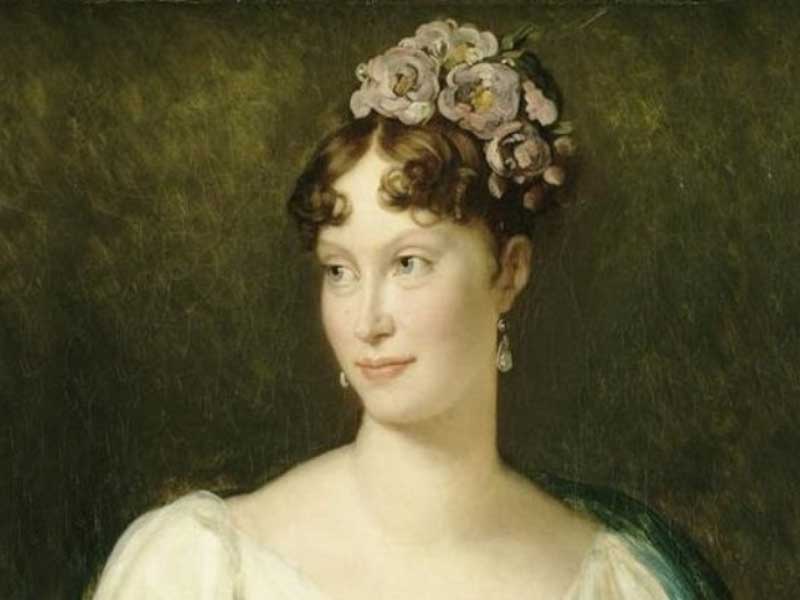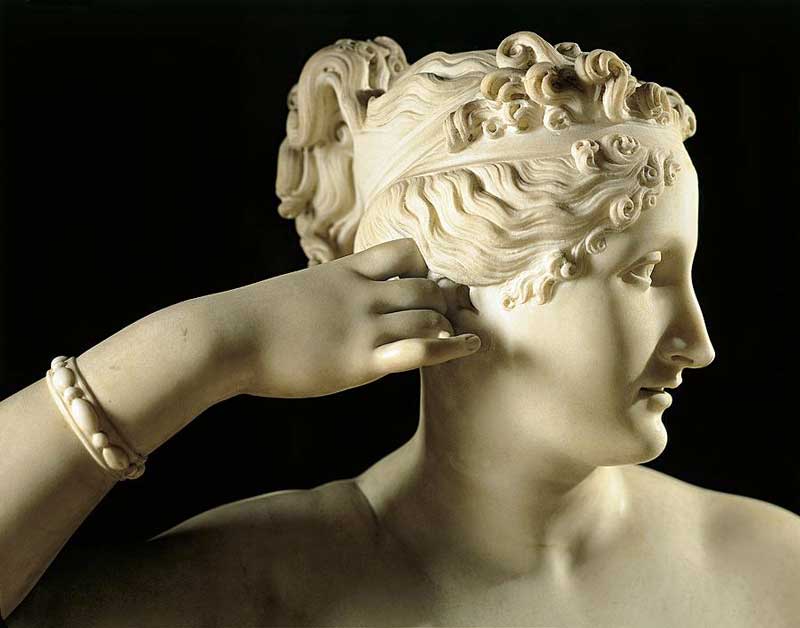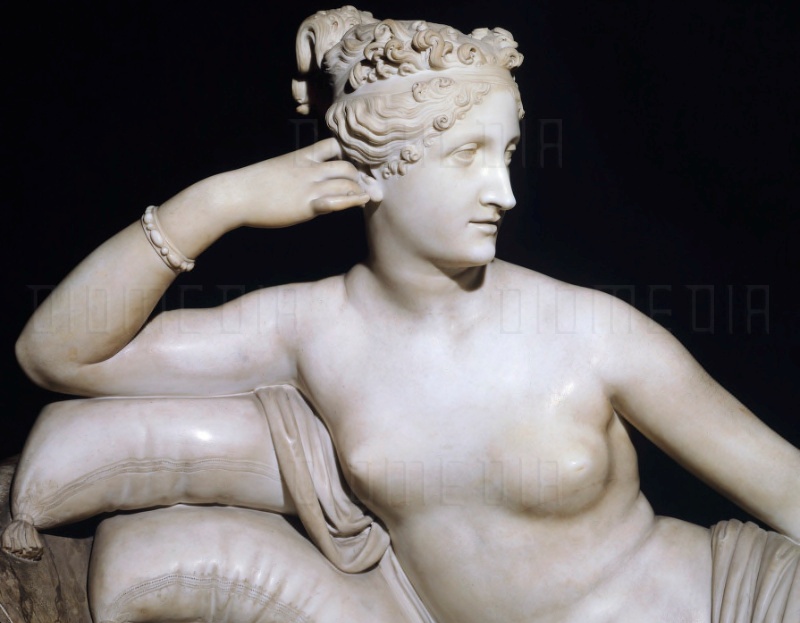
Born in Ajaccio, Corsica on 20 September 1780 to Marie Letizia Ramolino and Carlo Bonaparte, Maria Paola Bonaparte, popularly known as Pauline, was a woman of great beauty and charm. As she grew up, she became a great flirt and took enormous pride in her appearance, particularly her pale skin and lovely hands and feet. Devoid of intelligence, she had no more manners than a schoolgirl, giggling at everything and nothing, but not without some wit and few glimmers.
However, she was never adverse to any man. Known for her impulsiveness, frivolity, and promiscuity, she was frequently depicted by the greatest artists of the age. Her dream of a journey from rags to riches, from a Corsican commoner to a royal princess who bathed in milk baths and counted a famous French actor among her other lovers, would not have been possible without her 11-years older brother Napoleon, the future French emperor, who favoured her over his other sisters. Labeled by his brother as the spoilt child of the family, she was the only one to visit him on Elba, the island to which he was exiled after his forced abdication in 1814.

Following the death of Carlo in 1785, the family plunged into poverty and moved to Toulon on the mainland. After some time, they shifted to Marseilles, when the future emperor was just a captain of artillery and could give them very little out of his scanty pay, and the Bonaparte sister had to live on almost charity. During that time, Pauline, a child of thirteen, dressed in shabby gowns and shoes full of holes, was sought out by several men of note. One among them was Louis-Marie Stanislas Fréron, the proconsul of Marseille, who visited her very often, and they fell in love. However, her mother objected to the match. Soon after the episode, Pauline fell in love with Junot, who later became a famous marshal. By that time, the three sisters began to feel the influence of Napoleon’s rise to power and enjoyed themselves as they had a beautiful villa in Antibes. However, after Napoleon had routed the Austrians in Italy, he became anxious to see his sisters settled. He proposed to General Marmont to marry Pauline, but he modestly refused, as he knew her far too well. Napoleon did not stop there and turned to the 26-year old General Leclerc, with whom Pauline had flirted for some time, as she had flirted with almost all the officers of Napoleon’s staff. Leclerc was rich and a man with good manners, but was rather serious in attitude and poor in health. However, he did not have any problem with Pauline’s attitude. They were married in French-occupied Milan on 14 June 1797, and Pauline gave birth to a boy, Dermide Louis Napoleon, on 20 April 1798.

In 1801, Napoleon appointed Leclerc Governor-General of Saint-Domingue, present-day Haiti, and sent him to put down a black rebel, and asked Pauline to accompany her husband. However, Pauline flatly refused to obey, as she did not like the idea of living so far from Europe for an indefinite period. But as ordered by her brother, she was carried on board with his son while screeching like an angry cat and set sail with her husband and one of her former lovers. Although bothered by the hot tropical climate, she found Haiti and Santo Domingo not that bad as she supposed. She found herself treated almost like a queen who could do as she pleased and have her orders implicitly obeyed, and plunged headlong to daze herself in all kinds of sensual pleasure. She had a nice time as she could easily find numerous lovers, including several of her husband’s soldiers.
But by the end of the second year, both she and her husband were struck with yellow fever, and Leclerc died on 2 November 1802. Pauline brought the body of her husband back to France, and during his burial, she, still recovering from her fever, paid him the tribute of cutting off her beautiful hair and burying it with him. When someone mentioned it as a touching tribute to her dead husband, Napoleon smiled cynically and remarked that she is aware that her hair is bound to fall as the aftereffect of her fever and that it will come in longer and thicker for being cropped.

In fact, Napoleon loved Pauline much more than his other sisters, and as he loved her most, he was very strict with her. Although he obliged her to wear mourning and to observe some of the proprieties, it was hard to keep her within bounds. Napoleon did not wish Pauline to remain unmarried for long as he knew that his beloved sister, the feather-headed, languishing, beautiful, distracting morsel of frivolity, had the manners of a kitten and the morals of a cat, and she likes to lead a life of Bacchanalian promiscuity. However, despite his efforts, he failed to betroth her to Francesco Melzi d’ Eri, the Duke of Lodi and the Vice-President of the Napoleonic Republic of Italy. After that, Napoleon arranged her marriage with Prince Camillo Borghese, a wealthy Roman nobleman who turned out to be as shallow and feckless as she was.
However, before he proceeded to arrange the marriage, it became known that the Prince was exceedingly intimate with her. The prince was eager to be connected with Napoleon, while Pauline was delighted at the idea of having the famous Borghese jewels, the finest collection of diamonds in the world. Although Napoleon insisted on his sister to wait till November for the sake of mourning protocol, they were married on 28 August 1803, without the knowledge of Napoleon. It offended Napoleon, and he refused to acknowledge her new title as the princess. But, at the same time, he arranged for a civil ceremony in November to confirm his sister’s marriage, which did not deter Pauline to continue her extramarital affairs, including an affair with Niccolo Paganini, the most celebrated violinist of his time.

Camillo, with his newlywed wife Pauline, and her son Dermide, arrived in Rome on 14 November, and as Pauline was anxious to learn how to behave in Roman society, she received tutorship in Italian etiquette, manners, and dancing. But Pauline’s lack of seriousness, apparent disdains for her husband, and hints of infidelity did not go down well with the Romans. Nevertheless, as Pauline’s health was continuously troubling her, Camillo Borghese suggested her visiting the baths of Pisa. Pauline agreed and intended to take her son along with her. But at the suggestion of her husband, she left the six-year-old with her brother-in-law. Unfortunately, on 13 August 1804, the boy died of fever and convulsions in her absence, for which she blamed Camillo Borghese.
In 1806 Napoleon made Pauline Bonaparte Borghese the Princess and Duchess of Guastalla, in Italy, while in the meantime, Camillo Borghese commissioned a marble statue of Pauline by Antonio Canova, the most famous Italian sculptor of the time. As Canova was commissioned by Camillo to portray his wife as a Roman goddess, according to the ancient Roman artistic tradition of casting powerful mortals in the role of deities, the artist suggested Pauline model Diana, the chaste goddess of the moon and hunt, so that she would appear fully clothed. However, Pauline laughed at the proposal and said nobody would believe her as a virgin. Instead, she insisted on Venus, the goddess of love, sex, and beauty, as she probably liked to enjoy the controversy of posing naked.

Borghese was appalled by the exotic sculpture, later named Venus Victrix depicting a reclining, nude Venus with the fingers of her right hand placed lightly on the nape of her neck, charged with seductive promise, and holding the apple of discord in her left hand. However, it was hidden in an attic, and Pauline Bonaparte left him soon after.
The infatuation of Napoleon for her little sister Pauline remained strong forever, though it was without passion, in the true sense of the term. He had an immense influence on Pauline, and though she was promiscuous, eager to have fun without any curb, she was afraid of her brother and his reprimands. Preceded by the muffled rumour of his impending divorce from Joséphine, when Napoleon returned in triumph to Paris in 1809 after winning the Battle of Wagram, he ran to his sister, who was also most anxiously waiting for him, and never did she show for her brother that much love and adoration. Like her brother, Pauline did not have a happy marriage, and though the couple remained married, they lived separately.

In April 1814, when Napoleon was forced to abdicate the throne and was exiled to Elba, a Mediterranean island in Tuscany, Italy, Pauline liquidated her assets and joined him there, and generously helped him to meet his expenses. She was the only one in the family to visit him and spend her time with him, while his wife fell away and went back to her Austrian relatives. Even after that, when he escaped from Elba and began his campaign of 1815, she unhesitatingly presented him with all the Borghese diamonds, which Napoleon had with him in his carriage at Waterloo, where they were captured by the English. After Waterloo, Pauline moved to Rome, along with her mother and the other members of the family, where she was privileged with the protection of Pope Pius VII, who once was her brother's prisoner. However, despite her keen desire, she could not accompany her beloved brother, when Napoleon was banished to St Helena, a remote island located in the South Atlantic Ocean, as she was extremely ill and confined to her bed. Nevertheless, to provide him some help, in case of need, she tried to sell all her trinkets, of which she was so proud.

In the meantime, her health was worsening alarmingly, as she continued to succumb to bouts of ill health. In 1824, she requested the Pope to help her reconcile with Borghese, who had been living in Florence with a mistress, and the prince return to her only three months before her death.
For much of her life, Pauline was of frail health. It is said that knowing that her death is near, one day she asked one of the maids to bring her a mirror. As she gazed at the mirror with her dying eyes, a smile of deep content appeared on her lips, and she mumbled that she is not afraid to die as she is still beautiful. She died on 9 June 1825, at the age of 44 at the Palazzo Borghese, the palace and main seat of the Borghese family, probably due to Salpingitis, an infection and inflammation in the Fallopian tubes, although the cause of death being given as tumor on the stomach which may also be pulmonary tuberculosis.
